 Food
Food  Food
Food  History
History 10 Odd Things Colonial Americans Kept at Home
 Weird Stuff
Weird Stuff 10 Superstitious Beliefs That Once Consumed Entire Cultures
 History
History 10 Bizarre Friendly Fire Incidents in Military History
 Technology
Technology 10 Modern Technologies That Accidentally Imitate Ancient Magic
 Mysteries
Mysteries 10 Mysteries of the Human Genome
 Weird Stuff
Weird Stuff 10 Things So Rare They’ve Only Been Found Once
 History
History 10 Legends Whose Last Moments Undid Their Glory
 Health
Health 10 Futuristic Ideas to Treat Common Medical Problems
 Weird Stuff
Weird Stuff Ten Surreal Attempts to Reverse Baldness
 Food
Food 10 Everyday Foods You Didn’t Know Were Invented by the U.S. Military
 History
History 10 Odd Things Colonial Americans Kept at Home
 Weird Stuff
Weird Stuff 10 Superstitious Beliefs That Once Consumed Entire Cultures
Who's Behind Listverse?

Jamie Frater
Head Editor
Jamie founded Listverse due to an insatiable desire to share fascinating, obscure, and bizarre facts. He has been a guest speaker on numerous national radio and television stations and is a five time published author.
More About Us History
History 10 Bizarre Friendly Fire Incidents in Military History
 Technology
Technology 10 Modern Technologies That Accidentally Imitate Ancient Magic
 Mysteries
Mysteries 10 Mysteries of the Human Genome
 Weird Stuff
Weird Stuff 10 Things So Rare They’ve Only Been Found Once
 History
History 10 Legends Whose Last Moments Undid Their Glory
 Health
Health 10 Futuristic Ideas to Treat Common Medical Problems
 Weird Stuff
Weird Stuff Ten Surreal Attempts to Reverse Baldness
Top 10 Dirtiest Places In Your Home
While it is known that public spaces can carry a variety of germs and bacteria, sometimes it is easy to forget that germs can show up even in the safety of your own home. It’s more likely that the bacteria you come in contact with will be in your own home rather than in a public space. In fact, your home is a breeding ground for bacteria such as staph, yeast and mold, salmonella, E. coli, and even fecal matter. These bacterias can grow and spread due to surface types, living and lifestyle habits, and spots you may miss, or may not thoroughly reach, when you do your cleaning.
10 Deadly Household Items You’ve Probably Used Today
One study found over 340 different bacteria on 30 different objects in your home.[1] Being aware of where these bacteria appear and what you can do can help lower your risk, and help your state of mind as well. And, with so many of us stuck in our houses under quarantine or lockdown from the Wuflu pandemic, it seems timely to look at the hotspots in our homes: the places that we should give an extra going over when we clean.
10 Garbage Cans
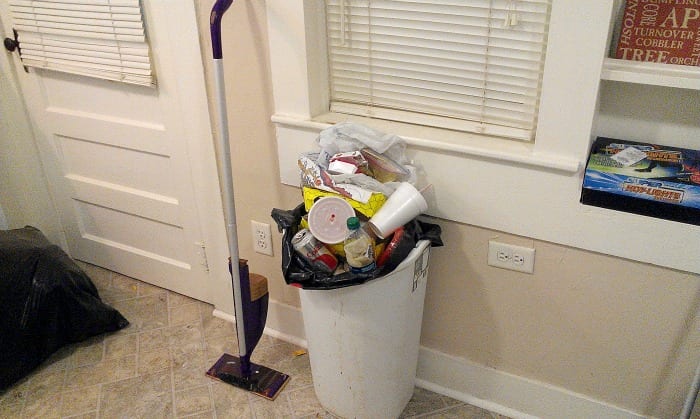
For many, garbage cans are actually not as dirty as you may think, due to the fact that trash bags which line the trash can itself have become widely popular. However, trash bags don’t always hold up to the amount of waste that can accumulate in your household. They are susceptible to ripping and overflowing, allowing the contents to leak out into the trash can itself. In other cases, overfilling the can may cause trash to reach the lid and multiply on the underside. There is an estimated 400 bacteria per every square inch of your garbage can, which might not be as much as your sponge or your cutting board but still can lead to continued mold and yeast growth.
You should clean your garbage can every month, which can be done by spraying it down with a bleach and water mixture, and rinsing it out in your bathtub. It is also important to remember that it’s not just the can itself that needs to be cleaned, but also the space where it sits. Bacteria can transfer from moving the bag out of the trashcan. It is recommended to clean the area with a household or floor cleaner.[2]
9 Remote Control
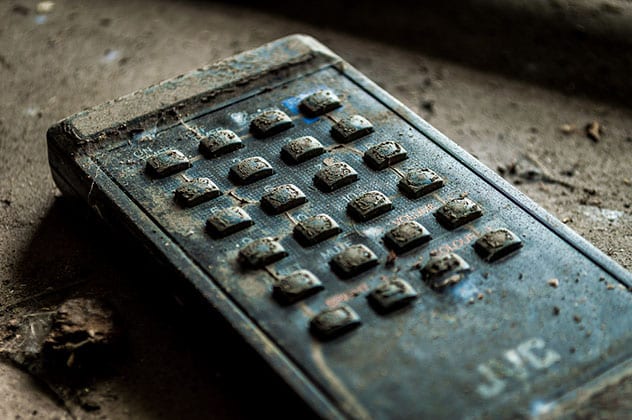
It may not cross your mind when you reach to turn on the TV, change the channel, or adjust the volume what bacteria you’re coming into contact with after touching the remote. Due to the high traffic amount remotes can have, whether it be from children to adults, it skips most household’s minds to clean the remote as well when cleaning the house. It is, however, important to clean the remote as 55% of remotes tested positive for having both yeast and mold.
Cleaning a remote can be simple, such as using a disinfecting wipe or creating a rubbing alcohol and water mixture and wiping the remote down with a paper towel. Don’t forget to take out the batteries and clean inside the compartment as well.[3]
8 Kitchen Counters
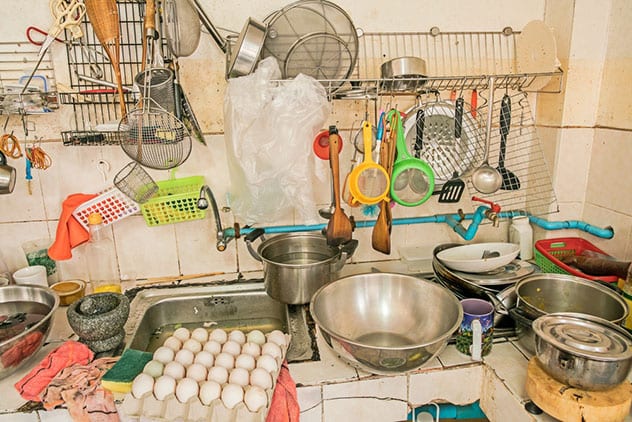
While this may not come as a shock, your kitchen counters harbor a variety of bacterias due to their constant interaction with daily living. Around 32% of kitchen counters have harmful bacteria, 18% of which belong to different molds. This can be a serious problem because bacteria can be spread easily, especially if you commonly touch your face. In fact, the common cold can be passed by simply coming into contact with an infected area and then rubbing your eye. What makes it worse is cleaning the countertop with a used dishcloth or sponge, especially since a dishcloth or sponge is considered to be the dirtiest place in your kitchen.
You can clean your counters down by using a household cleaner, or with a bleach and water solution. If your counter requires special care due to its material, it is best advised to search what cleaners will be safe to use and won’t cause damage to your counter.[4]
7 Faucet handles
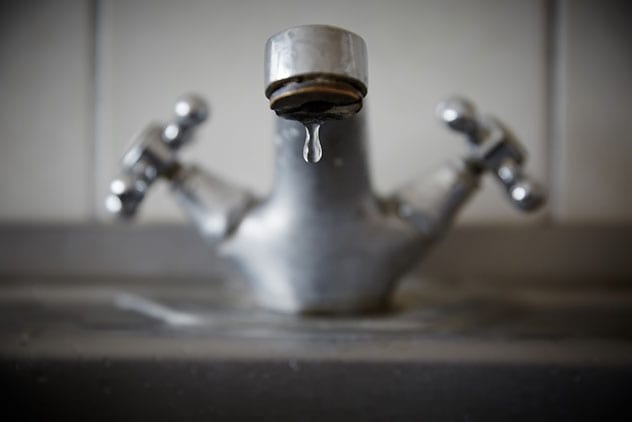
Unfortunately, in order to clean your hands after using the restroom, you’ll need to touch the sink faucet handles first. Because of this, a multitude of various bacterias are passed to the handles, making your attempts at cleaning a bit futile as you have to turn the faucet off once you’re done washing your hands. In a household’s bathroom, 27% of the sinks were found to have mold and some even tested positive for staph. There is an estimated amount of 2,786 bacterias found on a bathroom faucet handle per every square inch.
It is recommended to wipe down your handles daily with either disinfectant wipes, spray, or with a bleach and water mixture.[5]
6 Stove Knobs
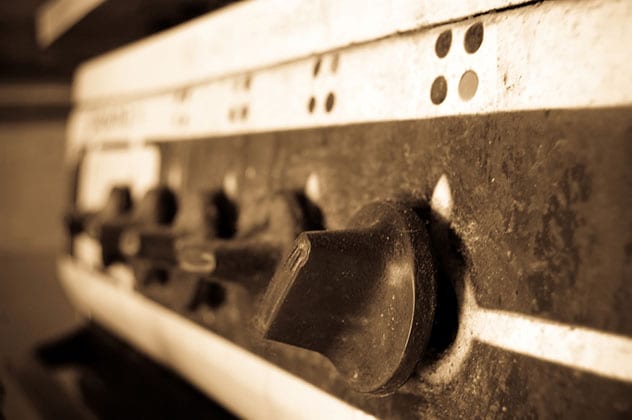
An overlooked aspect in cleaning one’s kitchen might be one of its main areas of traffic: the stove knobs. For many, the top of the stove becomes routine because the mess is unable to miss. However, some may overlook the knobs of stove, even though bacteria is just as likely to be found on the knobs as it is on the stove. In fact, 14% of stove knobs have coliform bacteria, while evidence found that one-third of stove knobs were covered in mold and yeast. Most of this is due to the fact that often hands aren’t washed after touching different items in your home, or even after coughing or sneezing, and the bacteria is spread to the knobs.
To avoid this, if possible, remove the knobs and soak them in hot water mixed with soap once a week. If you cannot remove the knobs, clean them once a week by using a designated household cleaner, ensuring that you wipe them thoroughly.[6]
Top 10 Cursed And Haunted Household Items
5 Coffee Makers
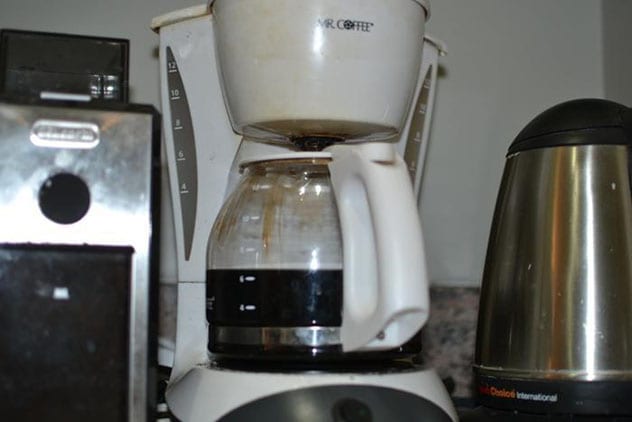
Coffee makers may provide what keeps us going but they also can be a breeding ground for different types of bacteria. In a study, 50% of coffee makers tested had mold and yeast and bacterias such as staphylococcus, streptococcus and bacillus cereus, as well as an accumulation of grime buildup due to lack of maintenance. A coffee maker, no matter whether it be a drip-maker or a Keurig, should be cleaned routinely, due to the moist environment being a breeding ground for bacteria. While it may seem like a hassle to take apart the maker, keep in mind that a coffee maker reservoir alone can collect around an estimated 84,982 per every square inch of bacteria.
One way to clean the reservoir especially, is to add four cups of vinegar and let it sit for 30 minutes before brewing it. You should brew it until the vinegar is gone, then run a few cycles of water to clear out any lingering scents or vinegar traces.[7]
4 Kitchen Sink
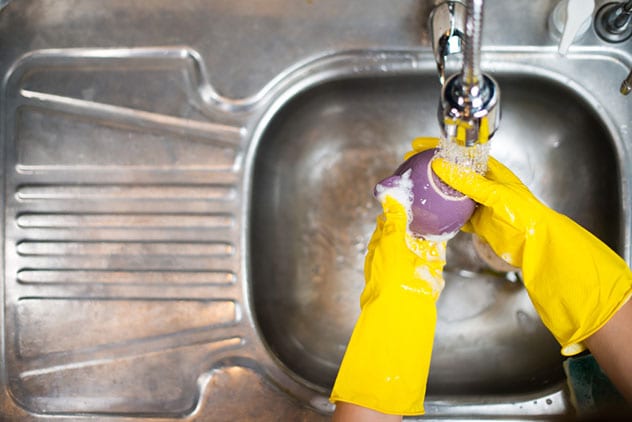
While this may not come as a surprise to many, your kitchen sink is dirtier than you might realize. An average kitchen sink holds about 4,945 microorganisms per square inch, which is about 70,000 times more bacteria than what is found on your toilet handle. That’s right, because of the amount of usage of your sink, whether it be raw meat to food left in your fridge, your sink is a breeding ground for bacteria because of the moist environment it provides and the food that can help feed the bacteria which grows. Not to mention the soap deposits which can form. Around 45% of sinks have coliform bacteria and 27% tested positive for the presence molds. In fact, there is more E. coli found in your kitchen sink than in a toilet before or after usage.
Cleaning your sink is important. Depending on your sink type, you can fill it with warm water and a small amount of bleach and let it sit for a few minutes before draining it. You can also scrub your sink by using a mix of lemon and powdered Borax to get the nooks and crannies of your sink and help with any smells.[8]
3 Cutting boards
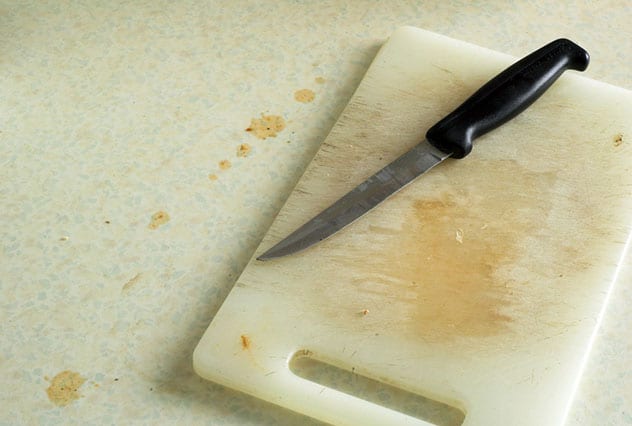
Cutting boards can come into contact with a variety of different bacterias, whether it be from your raw meat, or the fruits and vegetables you’re cutting up. However, without taking proper cleaning precautions, your cutting board can become a harbor for these different bacterias. Cutting boards that aren’t properly maintained can harbor an average of 18% of coliform bacteria and 14% of yeast and mold. While this may not seem like a lot, cutting boards are 200 times more likely to contain fecal bacteria than a toilet seat. This is due to not taking proper cleaning precautions, especially because bacteria can multiply in the grooves and scars caused by knives.
You can clean your plastic boards by placing them in the dishwasher during a cycle and monitor the wear on the board. If you have a wooden board, you can soak the board with a bleach and water mixture, or a vinegar and water mixture, for only a few minutes before rinsing it with hot water and allowing it to air dry. It is recommended that you use separate cutting boards, if possible, for different kitchen items.[9]
2 Toothbrush Holders
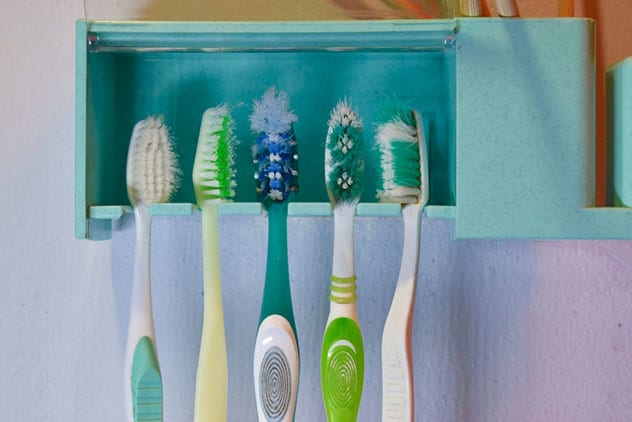
It might not cross your mind when you’re picking up your toothbrush how much bacteria has accumulated on it. However, before you put that toothbrush in your mouth, consider the last time you’ve cleaned it (if you have) and its location in your bathroom. The average toothbrush is a hotbed for different bacterias, such as mold and yeast, as well as staph and coliform. Not to mention the amount of fecal-containing matter that can gather due to its proximity to the toilet.
On average, there are 2,465,876 bacterial organisms located on your toothbrush holder. From there, the bacteria can easily spread. You can wash your toothbrush in hot water with soap twice a week, making sure to rinse it thoroughly, and clean the area as often as possible. It is recommended that you also store your toothbrush in less open spaces to avoid contamination.[10]
1 Dish Sponges
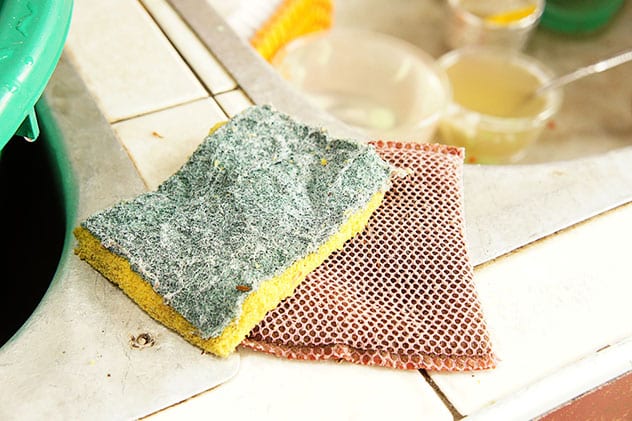
It may come as a surprise, or not one at all, that the dirtiest place in your house is your kitchen sponge. Despite its main use being to clean, your sponge has an estimated 321,629,869 microorganisms living in every gram of your sponge. According to a study, an estimated 75% of dish sponges had Salmonella, E. coli, and fecal matter inside of the sponge— a shocking percentage, considering a bathroom faucet only has 9%. The study also found that 86% of sponges also harbor yeast and mold and another 18% have staph bacteria.
You should consider throwing your sponges away every two weeks, and in the mean time you can clean your sponge by soaking it in a bowl of water and a small amount of bleach. If you are opposed to sponges in general, you can trade your sponges in for a dish rag. Just remember your rag needs to be cleaned just as frequently. Throwing it in a hot water cycle with some bleach will help do the trick.[11]
10 Poisonings With Extraordinarily Common Household Items








